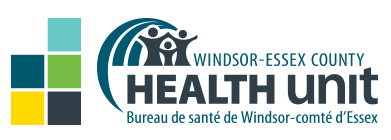TB infection is defined as the presence of latent or dormant Mycobacterium tuberculosis bacteria, with no clinical evidence of active disease.
The Canadian TB Standards (8th Ed.) recommends treating patients for TB infection with TPT, especially those at increased risk for developing TB disease. Active disease must be ruled out before starting treatment.
| Very High Risk |
|
| High Risk |
|
| Moderate Risk |
|
| Low Risk |
|
Individuals who were born in countries with a TB incidence of ≥50/ 100,000 should also be considered for TPT, especially if they have additional risks for developing TB disease. For TB incidence in individual countries, see the World Health Organization country TB profiles: https://worldhealthorg.shinyapps.io/tb_profiles/
Recommended Treatment Regimens for TB
Refer to the Canadian TB Standards (8th Ed.) for additional information on treatment, including considerations for specific populations (e.g., organ transplant, HIV, pregnant and breastfeeding, older adults).
| Regimen | Duration | Dose | Frequency | Additional Considerations |
|---|---|---|---|---|
|
First-line regimen* Rifampin (4R) |
4 months (120 doses) |
Adults: 10mg/kg Children: 10-20mg/kg Maximum: 600mg Available in: 300mg and 150mg capsules |
Daily |
Rifamycins are inducers of hepatic metabolizing enzymes, including cytochrome P450 enzymes, which can result in increased elimination of many other medications. Interactions between patients’ baseline medications and Rifampin should be reviewed using an up-to-date drug decision support tool prior to treatment initiation. |
|
Second-line regimen
Isoniazid (9H) |
9 months (270 doses) |
Adults: 5mg/kg Children: 10-15mg/kg Maximum: 300mg Available in: 300mg and 100mg tablets, and 10mg/mL liquid |
Daily | Pyridoxine (Vitamin B6) 25mg daily should be given at each dose to minimize the risk of neuropathy. |
|
Alternative regimen Isoniazid (6H) |
6 months (180 doses) |
Adults: 5mg/kg Children: 10-15mg/kg Maximum: 300mg Available in: 300mg and 100mg tablets, and 10mg/mL liquid |
Daily | Pyridoxine (Vitamin B6) 25mg daily should be given at each dose to minimize the risk of neuropathy. |
* Publicly funded Rifapentine (3HP) is only available to manage outbreaks and other exceptional circumstances, and requires approval from the Office of the Chief Medical Officer of Health, in consultation with the Ministry of Health.
Recommended Baseline Testing and Monitoring
| Baseline |
For all regimens:
|
| After one month of treatment |
For all regimens:
Additionally for 4R regimen:
Patients taking 4R do not require further laboratory monitoring during treatment unless the patient has an abnormal test result, develops symptoms suggesting an adverse event, or has risk factors for hepatotoxicity*. |
| Monthly |
For 9H and 6H in patients with risk factors for hepatotoxicity*:
|
* Pregnancy or first 3 months postpartum, history of previous drug-induced hepatitis, current cirrhosis or chronic active hepatitis of any cause, hepatitis C, hepatitis B with abnormal transaminases, daily alcohol consumption or concomitant treatment with other hepatotoxic drugs (e.g., methotrexate), over age 50 years (for 9H and 6H).
Windsor-Essex County Health Unit Monitoring and Dispensing
Patients with a prescription can obtain TB medication for free from the Windsor-Essex County Health Unit by appointment. Prescriptions can be faxed to 226-783-2132. Patients are regularly followed up by the Health Unit to assess for medication tolerability and to encourage adherence. For further information, call 519-258-2146, ext. 1420.

